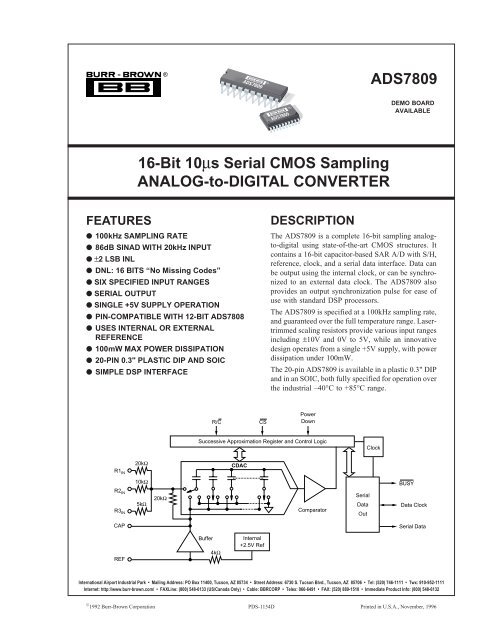

- 16 bit parallel to serial converter ic driver#
- 16 bit parallel to serial converter ic code#
- 16 bit parallel to serial converter ic series#
16 bit parallel to serial converter ic series#
The STP16C596 for example will drive 16 LED's and eliminates the series resistors with built-in constant current sources.)
16 bit parallel to serial converter ic driver#
(Users may also wish to search for other driver chips with "595" or "596" in their part numbers, there are many.

You can link multiple registers together to extend your output even more. The datasheet refers to the 74HC595 as an "8-bit serial-in, serial or parallel-out shift register with output latches 3-state." In other words, you can use it to control 8 outputs at a time while only taking up a few pins on your microcontroller.
16 bit parallel to serial converter ic code#
When the start command is applied, the SAR sets the MSB to logic 1 and other bits are made logic 0, so that the trial code becomes 1000.Ģ Conversion time is constant and independent of the amplitude of the analog input signal VA.Ģ The conversion time is more compared to flash type ADC.At sometime or another you may run out of pins on your Arduino board and need to extend it with shift registers. The output of the comparator is used to activate the successive approximation logic of SAR.

The second input to the comparator is the unknown analog input voltage VA. The equivalent analog output voltage of DAC, VD is applied to the non-inverting input of the comparator. It consists of a successive approximation register (SAR), DAC and comparator. The functional block diagram of successive approximation type of ADC is shown below. Now finally VA = VD, and the conversion stops. Since the unknown analog input voltage VA is higher than the equivalent digital voltage VD, as discussed in step (2), the MSB is retained as 1 and the next MSB bit is set to 1 as followsĪgain as discussed in step (2) VA>VD, hence the third MSB is retained to 1 and the last bit is set to 1. when the conversion starts, the MSB bit is set to 1. Let us assume that the 4-bit ADC is used and the analog input voltage is VA = 11 V. The above steps are more accurately illustrated with the help of an example. Comparison is made as given in step (1) to decide whether to retain or reset the second MSB. Otherwise, the MSB is set to 0 and the second MSB is set to 1. (2) If the analog input voltage is higher than the digital equivalent voltage, the MSB is retained as 1 and the second MSB is set to 1. The digital equivalent voltage is compared with the unknown analog input voltage. (1) The MSB is initially set to 1 with the remaining three bits set as 000. This type of ADC operates by successively dividing the voltage range by half, as explained in the following steps. The principle of successive approximation process for a 4-bit conversion is explained here. The basic principle of this type of A/D converter is that the unknown analog input voltage is approximated against an n-bit digital value by trying one bit at a time, beginning with the MSB. The conversion time is maintained constant in successive approximation type ADC, and is proportional to the number of bits in the digitaloutput, unlike the counter and continuous type A/D converters.

Successive Approximation type ADC is the most widely used and popular ADC method.


 0 kommentar(er)
0 kommentar(er)
